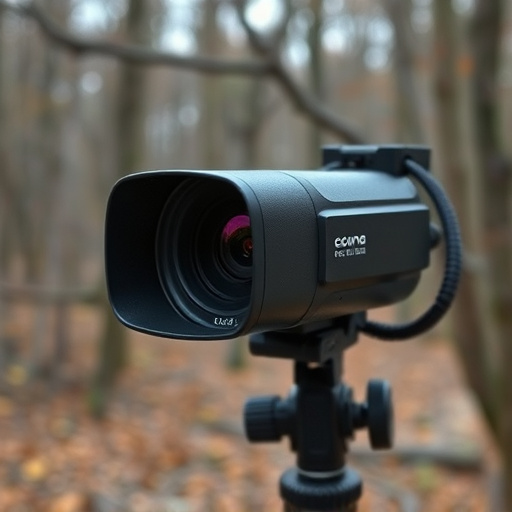Strategically placing small hidden cameras in nurseries requires consideration of privacy laws and tenant consent. These cameras offer discreet monitoring solutions for enhanced child safety while integrating into decor. Landlords must be vigilant during inspections to detect covert camera installations, and open communication about privacy is essential for a secure rental environment. Small hidden cameras also serve diverse needs beyond childcare, featuring motion activation and night vision.
In today’s digital age, understanding the placement of small hidden cameras in rental properties is essential for both landlords and tenants. This article guides you through identifying discreet locations for these devices, navigating legal considerations such as privacy laws and rental agreements, and exploring various types suitable for different purposes. Additionally, learn how to detect and prevent surveillance in your rental space, with a special focus on ensuring safety for sensitive areas like nurseries.
- Identifying Discreet Locations for Hidden Cameras
- Legal Considerations: Privacy Laws and Rental Agreements
- Types of Small Hidden Cameras for Different Purposes
- Detecting and Preventing Surveillance in Rental Spaces
Identifying Discreet Locations for Hidden Cameras
Identifying discreet locations for hidden cameras, like small hidden cameras for nursery settings, requires a keen eye for detail and understanding of common spaces where surveillance might go unnoticed. Consider areas with limited visibility or behind objects that obstruct line-of-sight. For instance, placing a camera inside a decorative plant pot or strategically positioning it near a corner or ceiling can provide covert monitoring without raising suspicion. The key is to blend the technology seamlessly into the environment while ensuring optimal coverage of sensitive zones.
Legal Considerations: Privacy Laws and Rental Agreements
In many jurisdictions, installing hidden cameras in rental properties is governed by strict privacy laws and rental agreement clauses. While landlords have legitimate concerns about property security and tenant responsibility, they must navigate these legal considerations carefully to avoid potential breaches of privacy. The use of small hidden cameras for nursery purposes or any other sensitive areas within a rental unit may be prohibited or require explicit consent from tenants, as per data protection regulations.
Rental agreements play a crucial role in establishing the rights and responsibilities of both landlords and tenants. Any surveillance system implementation should be clearly outlined in the lease contract, detailing the purpose, placement, and scope of monitoring. Tenants have the right to know if their rental space is under constant observation and can challenge any invasive practices that infringe on their privacy. As technology advances, it’s essential for both parties to stay informed about evolving privacy laws related to small hidden cameras in residential settings.
Types of Small Hidden Cameras for Different Purposes
Small hidden cameras have become increasingly sophisticated, offering a range of options for different purposes. For parents looking to ensure their child’s safety in their nursery, miniature cameras designed to blend into the environment are ideal. These cameras can be discreetly placed near cribs or play areas, providing peace of mind without compromising on decor.
In addition to nurseries, small hidden cameras find use in home offices, studios, and even pet monitoring. Some models feature motion-activated recording, ensuring energy efficiency, while others come with night vision capabilities for round-the-clock surveillance. With advancements in technology, these cameras offer high-definition video quality, making them versatile tools for various needs.
Detecting and Preventing Surveillance in Rental Spaces
Detecting and preventing surveillance in rental spaces is a growing concern for tenants, particularly with the proliferation of small hidden cameras, like those marketed for nurseries. Landlords and property managers must be vigilant to ensure their properties aren’t being used as surveillance hubs without consent. Regular inspections, especially in areas with high privacy value such as bedrooms and bathrooms, can help identify covert camera installations.
Tenants can take proactive measures too. Staying vigilant during move-in and when noticing unusual behavior from maintenance personnel is crucial. Additionally, installing decoy cameras or other visual deterrents, while not a foolproof method, may discourage potential perpetrators. It’s essential to maintain open communication about privacy concerns with both landlords and neighbors for a secure rental environment.
In today’s digital age, understanding the placement of small hidden cameras in rental properties is crucial for both landlords and tenants. By identifying discreet locations, such as those suitable for a small hidden camera in a nursery, and staying informed about legal considerations regarding privacy laws and rental agreements, individuals can protect their spaces effectively. Being proactive in detecting and preventing surveillance ensures a safer environment, fostering trust between tenants and landlords.
